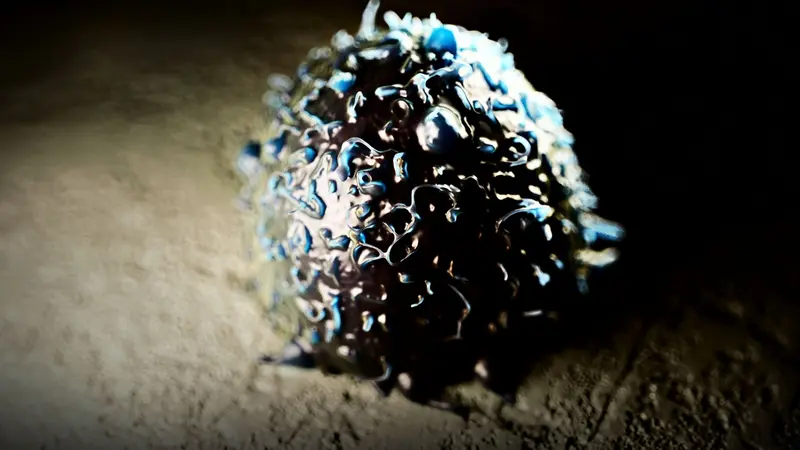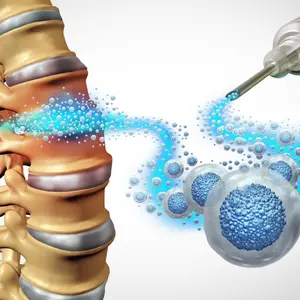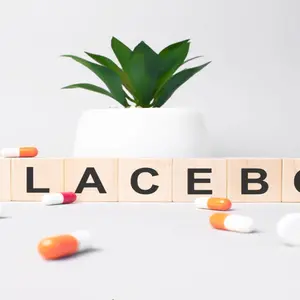

WELLthier Living and Aging

WELLthier Living and Aging
Mesenchymal Stem Cell Derived Extracellular Vesicles – The New Age of Regenerative Medicine
by Sean Vandersluis, PhD and Adam Brockman, DC, ND
Aging is the most significant risk factor for a wide array of chronic diseases, including respiratory diseases, neurological disorders (ND), cardiovascular disease (CVD), osteoarthritis (OA), and other metabolic disorders.1,6 Although these diseases have different physiological manifestations, they share a common origin: inflammation and cellular dysfunction. Over time, intrinsic and extrinsic stressors drive genomic instability, mitochondrial inefficiency and oxidative stress.6 Additionally, cells have a finite replicative lifespan. With each division, telomeres, the protective caps at the end of chromosomes, shorten. These changes push cells into senescence, a non-dividing but metabolically active state characterized by the secretion of pro-inflammatory cytokines, chemokines, and proteases collectively termed the senescence-associated secretory phenotype (SASP).4 SASP factors activate immune cells and induces neighboring cells to also enter senescence, creating a self-perpetuating cycle of tissue dysfunction. This leads to chronic inflammation, or “inflammaging,”7 which disrupts tissue microenvironments, stem cell niches, and intercellular communication, ultimately impairing tissue repair and increasing disease susceptibility.
Reversing these changes requires regenerative therapies that reduce inflammation, restore homeostasis, and reactivate intrinsic repair mechanisms. Such therapies offer promising potential for treating age-related diseases.2
Mesenchymal Stem Cell-Extracellular Vesicles – Cell-Free Regenerative Medicine
Mesenchymal stem cells (MSCs) have emerged as a promising tool in regenerative medicine due to their unique ability to modulate immune responses, rejuvenate damaged cells and promote tissue repair. Found in many tissues including bone marrow (BM), adipose tissue (AT), and umbilical cord (UC), MSCs are multipotent cells capable of self-renewal and differentiation into osteoblasts, chondrocytes, and adipocytes.3 Their biological role involves sensing tissue injury, migrating to the site, modulating immune activity, and releasing molecular signals that guide stem and progenitor cells in tissue regeneration.5 MSCs have garnered substantial research interest as regenerative medicine therapeutics because of their unique biological function. Indeed, MSC based therapies have shown promise in preclinical and early clinical studies across many diseases over the last 15 years.8
Limitations of Cell Based Therapies
However, several limitations hinder broader adoption.9 Systemic administration via intravenous infusion often results in MSC accumulation in the lungs, liver, and spleen, reducing availability at target tissues.10,11 This is particularly problematic for treating diseases of the central nervous system (CNS) where MSCs cannot efficiently cross the blood-brain-barrier12 further restricting effective doses. Direct delivery methods (e.g., intracerebral injection) improve targeting11,13 but can be invasive and not feasible for every patient. Immunogenicity is another concern. Although MSCs express low levels of HLA antigens, allogenic rejection can still occur, and their proliferative capacity poses a tumorigenic risk14, limiting repeat dosing.15
Paradigm Shift to MSC-EV Therapies
Mounting evidence suggests that much of MSC’s therapeutic benefit is mediated by extracellular vesicles (EVs) which are nanoscale, membrane-bound packages containing bioactive cargo like growth factors, cytokines, lipids, mRNA and microRNAs to target cells.6 MSC-derived EVs offer a cell-free alternative that addresses these limitations. EVs are generally classified into three main subtypes—exosomes (30–150 nm), microvesicles (100–1,000 nm), and apoptotic bodies (500–2,000 nm)—with exosomes being the most abundant subtype secreted by MSCs. Their small size allow them to circulate systemically with less accumulation in off-target tissues and they can effectively cross the blood-brain-barrier enabling non-invasive delivery to the CNS.16 Like cells, EVs are composed of a lipid bilayer but contain lower levels of HLA markers and have no replicative capacity rendering them even less immunogenic and tumorigenic which facilitates repeat dosing.17 From a manufacturing standpoint EVs are much easier stored long-term allowing for off-the-shelf therapies. These benefits position MSC-EVs as a safer, and more clinically versatile therapeutic while retaining the immunomodulatory, and regenerative signaling capacities that make MSC therapies effective.
Mechanisms of MSC-EV Regeneration
Preventing Further Damage: Immunomodulation
Immunomodulation is a primary mechanism by which MSC-EVs exert their regenerative effects.18 MSCs detect inflammatory cues in the tissue microenvironment through pattern recognition receptors including toll-like receptors and respond by secreting EVs enriched with anti-inflammatory molecules, including prostaglandin E2, and interleukin-10.2 This cocktail suppresses SASP cytokines like TNFα and IL-6 by targeting pathways including NF-κB, JAK/STAT, and MAPK/ERK.2,6 Macrophages are reprogrammed from a pro-inflammatory M1 to an anti-inflammatory M2 phenotype19–21, while dendritic cell maturation is inhibited, reducing T-cell–mediated responses and shifting the microenvironment toward an anti-inflammatory state.22
SASP cytokines also drive extracellular matrix (ECM) remodelling and fibrosis in conditions like OA.23 MSC-EVs counteract this by reducing levels of tissue-degrading enzymes like matrix metalloproteinase-1 (MMP1)24, downregulating fibrosis-associated proteins like α-smooth muscle actin25, and upregulating ECM structural components like collagen type II26 ultimately restoring tissue integrity. By reprogramming the immune environment, MSCs support a regenerative state limiting further damage from activated immune cells.
Rejuvenating Senescent Cells: Activating Regenerative Signaling and Survival Pathways
Beyond inflammation control and ECM remodelling, MSC-EVs actively promote tissue repair by rejuvenating senescent cells and activate stem/progenitor repair pathways. MSC-EVs activate mTOR signalling to enhance cell proliferation and ERK signalling to promote cell migration towards injury sites.2,6 They promote cell survival by upregulating anti-apoptotic genes like BCL227 and downregulating pyroptosis regulators including caspase-1.28 Oxidative stress and mitochondrial dysfunction are reduced via EV-mediated delivery of antioxidant enzymes, functional mitochondria, and induction of endogenous antioxidant pathways.29 These changes reduce SASP secretion synergizing with the immunomodulatory effects. Once rejuvenated cells exit senescence, MSC-EVs activate tissue-specific repair pathways in stem/progenitor populations to allow tissue regeneration.
Therapeutic Potential of MSC-EVs
These molecular effects translate into the tangible therapeutic outcomes observed across a variety of conditions. While clinical studies on MSC-EVs remain limited – primarily in COVID-1930,31 – they are expanding as preclinical data continues to show efficacy in OA, respiratory diseases2, ND32, and CVD, amongst others.
The treatment of OA with MSC-EVs is currently the most well studied. OA progression is driven in part by pro-inflammatory M1 macrophage in synovial tissue.33 MSC-EVs have been shown in preclinical studies to promote M2 macrophage polarization, reduce synovial inflammation, and stimulate chondrocyte-driven ECM formation via ERK, AKT, and Wnt5a signaling.19–21 Intra-articular injection in animal models preserved cartilage thickness and reduced joint degeneration34 and a recent clinical trial in patients with knee OA reported significant improvements in both pain and functional outcomes following MSC-EV injection.35
During the COVID-19 pandemic, a Phase I clinical trial involving intravenous MSC-EV administration in hospitalized patients showed enhanced oxygenation and decreased inflammatory markers, supporting their role in mitigating acute respiratory distress.30,31
The treatment of ischemic stroke is the most well studied ND treated with MSC-EVs. Pre-clinical studies demonstrated that MSC-EV treatment after ischemic stroke led to an increase in M2 macrophage, a reduction in pro-inflammatory cytokines, reduced apoptotic signalling and an increase in angiogenesis.37 A small phase 1 trial demonstrated that MSC-EVs are safe and potentially effective in patients undergoing decompressive craniectomy.39
The versatility of MSC-EV administration is exemplified by two studies using topical delivery. Dry eye symptoms in patients with the autoimmune condition Sjögren’s syndrome, showed improvements after topical application of Wharton’s Jelly-derived MSC-EVs which was accompanied by decreased levels of SASP cytokines, including IL-6, in tear fluid.36 In dermatology, AT-MSC-EVs moderately reduced melanin production” in hyperpigmentation disorders.38 Lastly, there are ongoing trials assessing MSC-EVs for burn wounds.40
MSC-EVs represent a paradigm shift in regenerative medicine. They capture the therapeutic benefits of MSCs while avoiding their primary safety, delivery, and manufacturing limitations. By modulating inflammation, reversing cellular senescence, and activating tissue repair pathways, MSC-EVs have demonstrated broad potential across musculoskeletal, respiratory, neurological, autoimmune, and dermatologic diseases. The MSC-EV field is now moving towards larger and more rigorous clinical trials which will be critical for validating their safety, efficacy, and long-term benefits.
This article first appeared in the October 2025 Issue of The American Chiropractor Magazine, Volume 47, Issue 10. Reprinted with permission.
REFERENCES
- Niccoli, T., and Partridge, L. (2012). Ageing as a risk factor for disease. Curr Biol 22, R741-52. https://doi.org/10.1016/j.cub.2012.07.024.
2. Brito, K. de N.L. de, and Trentin, A.G. (2025). Role of mesenchymal stromal cell secretome on recovery from cellular senescence: an overview. Cytotherapy 27, 422–437. https://doi.org/10.1016/j.jcyt.2024.11.014.
3. Wang, B., Han, J., Elisseeff, J.H., and Demaria, M. (2024). The senescence-associated secretory phenotype and its physiological and pathological implications. Nat Rev Mol Cell Biol 25, 958–978. https://doi.org/10.1038/s41580-024-00727-x.
4. Olivieri, F., Prattichizzo, F., Grillari, J., and Balistreri, C.R. (2018). Cellular Senescence and Inflammaging in Age-Related Diseases. Mediators Inflamm 2018, 9076485. https://doi.org/10.1155/2018/9076485.
5. Kou, M., Huang, L., Yang, J., Chiang, Z., Chen, S., Liu, J., Guo, L., Zhang, X., Zhou, X., Xu, X., et al. (2022). Mesenchymal stem cell-derived extracellular vesicles for immunomodulation and regeneration: a next generation therapeutic tool? Cell Death Dis 13, 580. https://doi.org/10.1038/s41419-022-05034-x.
6. Maqsood, M., Kang, M., Wu, X., Chen, J., Teng, L., and Qiu, L. (2020). Adult mesenchymal stem cells and their exosomes: Sources, characteristics, and application in regenerative medicine. Life Sci 256, 118002. https://doi.org/10.1016/j.lfs.2020.118002.
7. Uccelli, A., Moretta, L., and Pistoia, V. (2008). Mesenchymal stem cells in health and disease. Nat Rev Immunol 8, 726–736. https://doi.org/10.1038/nri2395.
8. Jovic, D., Yu, Y., Wang, D., Wang, K., Li, H., Xu, F., Liu, C., Liu, J., and Luo, Y. (2022). A Brief Overview of Global Trends in MSC-Based Cell Therapy. Stem Cell Rev Rep 18, 1525–1545. https://doi.org/10.1007/s12015-022-10369-1.
9. Zhou, T., Yuan, Z., Weng, J., Pei, D., Du, X., He, C., and Lai, P. (2021). Challenges and advances in clinical applications of mesenchymal stromal cells. J Hematol Oncol 14, 24. https://doi.org/10.1186/s13045-021-01037-x.
10. Li, L., Dong, L., Zhang, J., Gao, F., Hui, J., and Yan, J. (2019). Mesenchymal stem cells with downregulated Hippo signaling attenuate lung injury in mice with lipopolysaccharide induced acute respiratory distress syndrome. Int J Mol Med 43, 1241–1252. https://doi.org/10.3892/ijmm.2018.4047.
11. Liu, Z., Mikrani, R., Zubair, H.M., Taleb, A., Naveed, M., Baig, M.M.F.A., Zhang, Q., Li, C., Habib, M., Cui, X., et al. (2020). Systemic and local delivery of mesenchymal stem cells for heart renovation: Challenges and innovations. Eur J Pharmacol 876, 173049. https://doi.org/10.1016/j.ejphar.2020.173049.
12. Liu, L., Eckert, M.A., Riazifar, H., Kang, D.-K., Agalliu, D., and Zhao, W. (2013). From blood to the brain: can systemically transplanted mesenchymal stem cells cross the blood-brain barrier? Stem Cells Int 2013, 435093. https://doi.org/10.1155/2013/435093.
13. Dick, A.J., Guttman, M.A., Raman, V.K., Peters, D.C., Pessanha, B.S.S., Hill, J.M., Smith, S., Scott, G., McVeigh, E.R., and Lederman, R.J. (2003). Magnetic resonance fluoroscopy allows targeted delivery of mesenchymal stem cells to infarct borders in Swine. Circulation 108, 2899–2904. https://doi.org/10.1161/01.CIR.0000095790.28368.F9.
14. Jeong, J.-O., Han, J.W., Kim, J.-M., Cho, H.-J., Park, C., Lee, N., Kim, D.-W., and Yoon, Y.-S. (2011). Malignant tumor formation after transplantation of short-term cultured bone marrow mesenchymal stem cells in experimental myocardial infarction and diabetic neuropathy. Circ Res 108, 1340–1347. https://doi.org/10.1161/CIRCRESAHA.110.239848.
15. Schu, S., Nosov, M., O’Flynn, L., Shaw, G., Treacy, O., Barry, F., Murphy, M., O’Brien, T., and Ritter, T. (2012). Immunogenicity of allogeneic mesenchymal stem cells. J Cell Mol Med 16, 2094–2103. https://doi.org/10.1111/j.1582-4934.2011.01509.x.
16. Milbank, E., Dragano, N.R. V, González-García, I., Garcia, M.R., Rivas-Limeres, V., Perdomo, L., Hilairet, G., Ruiz-Pino, F., Mallegol, P., Morgan, D.A., et al. (2021). Small extracellular vesicle-mediated targeting of hypothalamic AMPKα1 corrects obesity through BAT activation. Nat Metab 3, 1415–1431. https://doi.org/10.1038/s42255-021-00467-8.
17. Phinney, D.G., and Pittenger, M.F. (2017). Concise Review: MSC-Derived Exosomes for Cell-Free Therapy. Stem Cells 35, 851–858. https://doi.org/10.1002/stem.2575.
18. Dabrowska, S., Andrzejewska, A., Janowski, M., and Lukomska, B. (2020). Immunomodulatory and Regenerative Effects of Mesenchymal Stem Cells and Extracellular Vesicles: Therapeutic Outlook for Inflammatory and Degenerative Diseases. Front Immunol 11, 591065. https://doi.org/10.3389/fimmu.2020.591065.
19. Zhang, J., Rong, Y., Luo, C., and Cui, W. (2020). Bone marrow mesenchymal stem cell-derived exosomes prevent osteoarthritis by regulating synovial macrophage polarization. Aging 12, 25138–25152. https://doi.org/10.18632/aging.104110.
20. Zhang, S., Chuah, S.J., Lai, R.C., Hui, J.H.P., Lim, S.K., and Toh, W.S. (2018). MSC exosomes mediate cartilage repair by enhancing proliferation, attenuating apoptosis and modulating immune reactivity. Biomaterials 156, 16–27. https://doi.org/10.1016/j.biomaterials.2017.11.028.
21. Tang, S., Chen, P., Zhang, H., Weng, H., Fang, Z., Chen, C., Peng, G., Gao, H., Hu, K., Chen, J., et al. (2021). Comparison of Curative Effect of Human Umbilical Cord-Derived Mesenchymal Stem Cells and Their Small Extracellular Vesicles in Treating Osteoarthritis. Int J Nanomedicine 16, 8185–8202. https://doi.org/10.2147/IJN.S336062.
22. Reis, M., Mavin, E., Nicholson, L., Green, K., Dickinson, A.M., and Wang, X.-N. (2018). Mesenchymal Stromal Cell-Derived Extracellular Vesicles Attenuate Dendritic Cell Maturation and Function. Front Immunol 9, 2538. https://doi.org/10.3389/fimmu.2018.02538.
23. Maldonado, M., and Nam, J. (2013). The role of changes in extracellular matrix of cartilage in the presence of inflammation on the pathology of osteoarthritis. Biomed Res Int 2013, 284873. https://doi.org/10.1155/2013/284873.
24. Lu, K., Li, H.-Y., Yang, K., Wu, J.-L., Cai, X.-W., Zhou, Y., and Li, C.-Q. (2017). Exosomes as potential alternatives to stem cell therapy for intervertebral disc degeneration: in-vitro study on exosomes in interaction of nucleus pulposus cells and bone marrow mesenchymal stem cells. Stem Cell Res Ther 8, 108. https://doi.org/10.1186/s13287-017-0563-9.
25. Gao, Y., Liu, M.-F., Li, Y., Liu, X., Cao, Y.-J., Long, Q.-F., Yu, J., and Li, J.-Y. (2024). Mesenchymal stem cells-extracellular vesicles alleviate pulmonary fibrosis by regulating immunomodulators. World J Stem Cells 16, 670–689. https://doi.org/10.4252/wjsc.v16.i6.670.
26. Zhang, S., Chuah, S.J., Lai, R.C., Hui, J.H.P., Lim, S.K., and Toh, W.S. (2018). MSC exosomes mediate cartilage repair by enhancing proliferation, attenuating apoptosis and modulating immune reactivity. Biomaterials 156, 16–27. https://doi.org/10.1016/j.biomaterials.2017.11.028.
27. Li, S., Stöckl, S., Lukas, C., Götz, J., Herrmann, M., Federlin, M., and Grässel, S. (2020). hBMSC-Derived Extracellular Vesicles Attenuate IL-1β-Induced Catabolic Effects on OA-Chondrocytes by Regulating Pro-inflammatory Signaling Pathways. Front Bioeng Biotechnol 8, 603598. https://doi.org/10.3389/fbioe.2020.603598.
28. Zhou, Y., Wen, L.-L., Li, Y.-F., Wu, K.-M., Duan, R.-R., Yao, Y.-B., Jing, L.-J., Gong, Z., Teng, J.-F., and Jia, Y.-J. (2022). Exosomes derived from bone marrow mesenchymal stem cells protect the injured spinal cord by inhibiting pericyte pyroptosis. Neural Regen Res 17, 194–202. https://doi.org/10.4103/1673-5374.314323.
29. Wang, L., Wu, Y., Yao, R., Li, Y., Wei, Y., Cao, Y., Zhang, Z., Wu, M., Zhu, H., Yao, Y., et al. (2023). The role of mesenchymal stem cell-derived extracellular vesicles in inflammation-associated programmed cell death. Nano Today 50, 101865. https://doi.org/10.1016/j.nantod.2023.101865.
30. Lightner, A.L., Sengupta, V., Qian, S., Ransom, J.T., Suzuki, S., Park, D.J., Melson, T.I., Williams, B.P., Walsh, J.J., and Awili, M. (2023). Bone Marrow Mesenchymal Stem Cell-Derived Extracellular Vesicle Infusion for the Treatment of Respiratory Failure From COVID-19: A Randomized, Placebo-Controlled Dosing Clinical Trial. Chest 164, 1444–1453. https://doi.org/10.1016/j.chest.2023.06.024.
31. Kaffash Farkhad, N., Sedaghat, A., Reihani, H., Adhami Moghadam, A., Bagheri Moghadam, A., Khadem Ghaebi, N., Khodadoust, M.A., Ganjali, R., Tafreshian, A.R., and Tavakol-Afshari, J. (2022). Mesenchymal stromal cell therapy for COVID-19-induced ARDS patients: a successful phase 1, control-placebo group, clinical trial. Stem Cell Res Ther 13, 283. https://doi.org/10.1186/s13287-022-02920-1.
32. Ghasemi, M., Roshandel, E., Mohammadian, M., Farhadihosseinabadi, B., Akbarzadehlaleh, P., and Shamsasenjan, K. (2023). Mesenchymal stromal cell-derived secretome-based therapy for neurodegenerative diseases: overview of clinical trials. Stem Cell Res Ther 14, 122. https://doi.org/10.1186/s13287-023-03264-0.
33. Manferdini, C., Paolella, F., Gabusi, E., Silvestri, Y., Gambari, L., Cattini, L., Filardo, G., Fleury-Cappellesso, S., and Lisignoli, G. (2016). From osteoarthritic synovium to synovial-derived cells characterization: synovial macrophages are key effector cells. Arthritis Res Ther 18, 83. https://doi.org/10.1186/s13075-016-0983-4.
34. Cosenza, S., Ruiz, M., Toupet, K., Jorgensen, C., and Noël, D. (2017). Mesenchymal stem cells derived exosomes and microparticles protect cartilage and bone from degradation in osteoarthritis. Sci Rep 7, 16214. https://doi.org/10.1038/s41598-017-15376-8.
35. Wang, Y., Kong, Y., Du, J., Qi, L., Liu, M., Xie, S., Hao, J., Li, M., Cao, S., Cui, H., et al. (2025). Injection of human umbilical cord mesenchymal stem cells exosomes for the treatment of knee osteoarthritis: from preclinical to clinical research. J Transl Med 23, 641. https://doi.org/10.1186/s12967-025-06623-y.
36. Habibi, A., Khosravi, A., Soleimani, M., Nejabat, M., Dara, M., and Azarpira, N. (2025). Efficacy of topical mesenchymal stem cell exosome in Sjögren’s syndrome-related dry eye: a randomized clinical trial. BMC Ophthalmol 25, 299. https://doi.org/10.1186/s12886-025-04078-9.
37. Chen, K.-H., Chen, C.-H., Wallace, C.G., Yuen, C.-M., Kao, G.-S., Chen, Y.-L., Shao, P.-L., Chen, Y.-L., Chai, H.-T., Lin, K.-C., et al. (2016). Intravenous administration of xenogenic adipose-derived mesenchymal stem cells (ADMSC) and ADMSC-derived exosomes markedly reduced brain infarct volume and preserved neurological function in rat after acute ischemic stroke. Oncotarget 7, 74537–74556. https://doi.org/10.18632/oncotarget.12902.
38. Cho, B.S., Lee, J., Won, Y., Duncan, D.I., Jin, R.C., Lee, J., Kwon, H.H., Park, G.-H., Yang, S.H., Park, B.C., et al. (2020). Skin Brightening Efficacy of Exosomes Derived from Human Adipose Tissue-Derived Stem/Stromal Cells: A Prospective, Split-Face, Randomized Placebo-Controlled Study. Cosmetics 7, 90. https://doi.org/10.3390/cosmetics7040090.
39. Dehghani, L., Khojasteh, A., Soleimani, M., Oraee-Yazdani, S., Keshel, S.H., Saadatnia, M., Saboori, M., Zali, A., Hashemi, S.M., and Soleimani, R. (2022). Safety of Intraparenchymal Injection of Allogenic Placenta Mesenchymal Stem Cells Derived Exosome in Patients Undergoing Decompressive Craniectomy Following Malignant Middle Cerebral Artery Infarct, A Pilot Randomized Clinical Trial. Int J Prev Med 13, 7. https://doi.org/10.4103/ijpvm.ijpvm_441_21.
40. Aegle Therapeutics (2024). Safety of Extracellular Vesicles for Burn Wounds (ClinicalTrials.gov Identifier NCT05078385). Phase 1/2a study of allogeneic MSC-derived EV (AGLE-102) for deep second-degree thermal burn wounds—evaluating safety and efficacy in approximately 10 patients. Available at: ClinicalTrials.gov.






